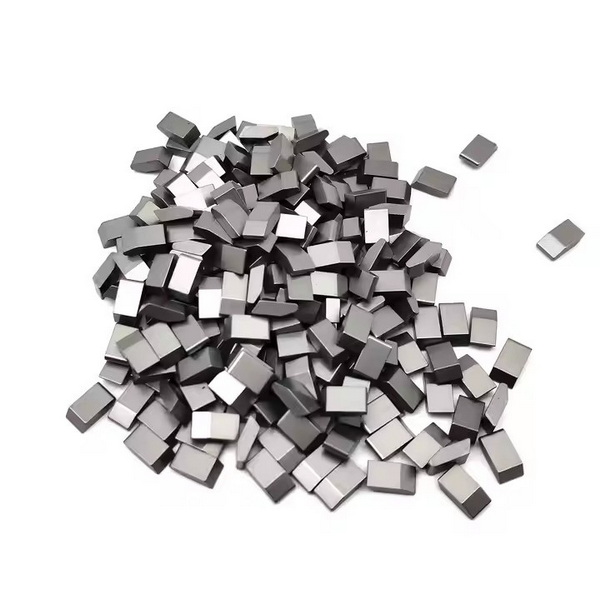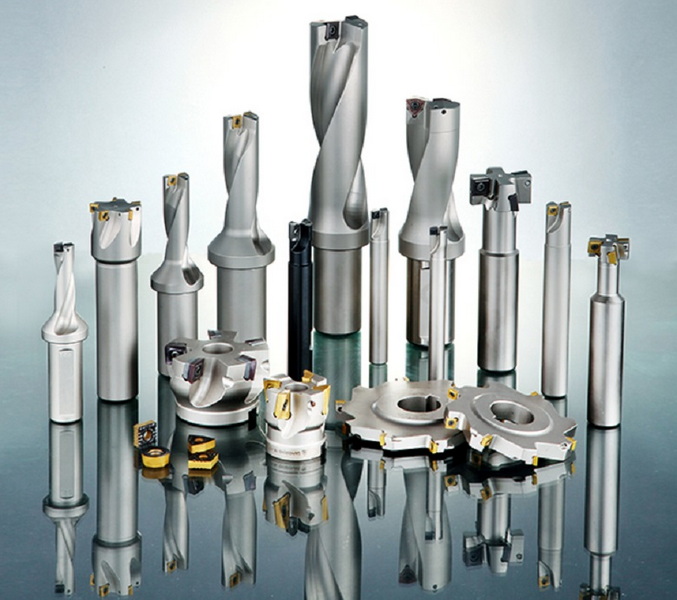Content Menu
● Introduction to Tungsten Carbide
>> Properties and Applications
● Health Effects of Tungsten Carbide
>> Short-Term Health Effects
>> Long-Term Health Effects
● Safety Precautions
● Environmental Impact
>> Recycling and Waste Management
● Industrial Applications
>> Consumer Products
● Conclusion
● FAQs
>> 1. What is Tungsten Carbide?
>> 2. Is Tungsten Carbide Toxic?
>> 3. What Are the Health Risks of Tungsten Carbide Exposure?
>> 4. How Can I Safely Handle Tungsten Carbide?
>> 5. Can Tungsten Carbide Cause Cancer?
● Citations:
Tungsten carbide, a compound made from tungsten and carbon, is renowned for its exceptional hardness and durability, making it a crucial material in various industrial and consumer applications. However, concerns about its safety and potential health risks have sparked discussions about whether tungsten carbide is bad for you. This article delves into the properties of tungsten carbide, its uses, potential health effects, and safety precautions to provide a comprehensive understanding of its impact on human health.

Introduction to Tungsten Carbide
Tungsten carbide is a hard, dense compound with a 1:1 ratio of tungsten to carbon atoms. It is often combined with metallic binders like cobalt or nickel to enhance its toughness and durability. The material is widely used in cutting tools, drill bits, and wear-resistant components due to its high hardness, wear resistance, and thermal stability.
Properties and Applications
- Hardness and Wear Resistance: Tungsten carbide ranks between 8.5 and 9 on the Mohs hardness scale, making it one of the hardest materials available. This property ensures that tungsten carbide components can withstand significant wear and tear, maintaining their integrity and performance over extended periods.
- Thermal Stability: It has a melting point exceeding 2,870°C (5,200°F), allowing it to retain its structural integrity at elevated temperatures. This is crucial for applications such as cutting and drilling, where tools often encounter high heat due to friction.
- Corrosion Resistance: Tungsten carbide exhibits excellent corrosion resistance, ensuring durability in harsh conditions. This property is particularly valuable in applications exposed to chemicals and moisture.
Health Effects of Tungsten Carbide
While tungsten carbide itself is considered stable and less reactive than pure tungsten, potential health risks arise from exposure to its dust or when it is combined with other metals like nickel and cobalt.
Short-Term Health Effects
- Skin and Eye Irritation: Contact with tungsten carbide dust can cause skin irritation, including allergic reactions, and eye irritation such as redness and itching.
- Respiratory Issues: Inhalation of tungsten carbide dust may lead to coughing, wheezing, and shortness of breath.
- Gastrointestinal Problems: Ingestion can cause gastrointestinal irritation.
Long-Term Health Effects
- Lung Diseases: Chronic exposure to tungsten carbide dust, especially when combined with cobalt or nickel, can lead to lung diseases such as pulmonary fibrosis and occupational asthma.
- Skin Sensitization: Repeated exposure can cause skin sensitization, leading to allergic reactions upon minimal contact.

Safety Precautions
To mitigate the risks associated with tungsten carbide, it is essential to follow proper safety protocols:
- Use Protective Gear: Wear protective gloves, safety glasses, and full-body protective clothing to prevent skin contact and eye exposure.
- Ventilation Systems: Use local exhaust ventilation or respirators approved for dust and mist to minimize inhalation risks.
- Wet Methods: Employ wet methods or vacuum systems with HEPA filters to reduce dust buildup during operations like grinding or cutting.
Environmental Impact
Tungsten carbide's environmental impact is generally minimal due to its inert nature. However, the mining of tungsten can have significant environmental effects, including deforestation and water pollution. Additionally, the disposal of tungsten carbide waste requires careful management to prevent environmental contamination.
Recycling and Waste Management
Efforts to recycle tungsten carbide and manage waste effectively are crucial for minimizing its environmental footprint. Recycling not only conserves resources but also reduces the need for new mining operations, which can mitigate environmental damage.
Industrial Applications
Tungsten carbide's versatility extends across various industries:
- Machining and Cutting Tools: Its hardness makes it ideal for cutting tools, drill bits, and saw blades.
- Jewelry: Tungsten carbide is used in jewelry due to its durability and resistance to scratches.
- Aerospace and Defense: It is used in rocket nozzles and other high-temperature applications due to its thermal stability.
Consumer Products
Beyond industrial applications, tungsten carbide is found in consumer products such as golf clubs, where its hardness enhances durability and performance.
Conclusion
Tungsten carbide is not inherently toxic but can pose health risks if proper safety measures are not followed. Its hardness and durability make it invaluable in industrial applications, but exposure to its dust, especially when combined with other metals, necessitates careful handling and protective measures.

FAQs
1. What is Tungsten Carbide?
Tungsten carbide is a compound made from tungsten and carbon, known for its exceptional hardness and wear resistance. It is often used in cutting tools and wear-resistant components.
2. Is Tungsten Carbide Toxic?
Tungsten carbide itself is not considered toxic, but it can cause health issues if inhaled as dust or if it contains other metals like nickel or cobalt.
3. What Are the Health Risks of Tungsten Carbide Exposure?
Exposure can lead to skin irritation, eye irritation, respiratory issues, and long-term lung diseases if proper precautions are not taken.
4. How Can I Safely Handle Tungsten Carbide?
Use protective gear, ensure good ventilation, and employ wet methods to reduce dust exposure.
5. Can Tungsten Carbide Cause Cancer?
There is no conclusive evidence that tungsten carbide causes cancer, but chronic exposure to certain tungsten compounds has raised concerns about potential health risks.
Citations:
[1] https://int-enviroguard.com/blog/tungsten-carbide-exposure-are-your-workers-at-risk/
[2] https://www.reddit.com/r/metallurgy/comments/ub4dg9/question_about_tungsten_carbide_toxicity/
[3] https://powder.samaterials.com/tds/sc/1733388175-DP1931.pdf
[4] https://www.istockphoto.com/photos/tungsten-carbide
[5] https://www.retopz.com/57-frequently-asked-questions-faqs-about-tungsten-carbide/
[6] https://www.ipsceramics.com/wp-content/uploads/2022/01/HSDS-14-Tungsten-Carbide-Issue-1.pdf
[7] https://www.safetyandhealthmagazine.com/articles/work-safely-with-tungsten-carbide-2
[8] https://pmc.ncbi.nlm.nih.gov/articles/PMC11003356/
[9] https://shop.machinemfg.com/the-pros-and-cons-of-tungsten-carbide-a-comprehensive-guide/
[10] https://redwoodrings.com/blogs/redwood-rings-blog/are-tungsten-rings-toxic
[11] https://nj.gov/health/eoh/rtkweb/documents/fs/1960.pdf
[12] https://www.linkedin.com/pulse/9-safety-precautions-while-using-tungsten-carbide-tools-
[13] https://en.wikipedia.org/wiki/Tungsten_carbide
[14] https://carbideprocessors.com/pages/technical-info/grinding-carbide-health-and-safety-risks.html
[15] https://www.zzbetter.com/new/9-safety-precautions-while-using-tungsten-carbide-tools.html
[16] http://picture.chinatungsten.com/list-18.html
[17] https://www.cdc.gov/niosh/npg/npgd0647.html
[18] https://www.tungstenrepublic.com/Tungsten-Carbide-Rings-FAQ.html
[19] https://patient.info/doctor/tungsten-poisoning
[20] https://pmc.ncbi.nlm.nih.gov/articles/PMC8633919/
[21] https://asia.kyocera.com/products/cuttingtools/images/sds/pdf/msds_cemented_carbide_e.pdf
[22] https://periodictable.com/Elements/074/pictures.html
[23] http://www.casmetcarbide.com/images/Casmet_MSDS-WC.pdf
[24] http://tungsten-powder.com/safety-information-of-tungsten-carbide-powder.html
[25] https://www.freepik.com/free-photos-vectors/tungsten-carbide
[26] https://www.ufz.de/index.php?en=35548
[27] https://eternaltools.com/blogs/tutorials/tungsten-carbide-an-informative-guide
















